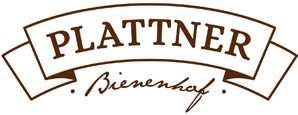In the basement, the former stable, the Plattner Bienenhof presents a collection of traditional objects concerning historical apiculture, which are explained during the guiding tour.
Besides films about apiculture and bee research are shown to the visitors.
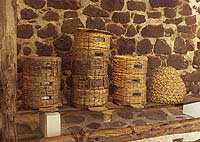 |
Bee Hives Already in the ancient times people began to offer the bees artificial lodgings. They used baskets, because they were similar to the natural accommodation in the hollow trees. The early apiarists had to cut out the honey together with the combs. The destruction of the combs could not be avoided, because the apiarists wanted the beeswax, which was needed for the production of candles and sailcloth. |
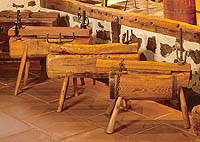 |
Wax presses The whole pieces of comb were put into the pressing tool and the honey was pressed out. Evan today wax presses are still used, but now only to press heated liquid wax through a sieve or a piece of cloth and thus to clean it. Beeswax is still today an important raw material for candles, skin creams, lipstick, ointments, wax painting colours, shoe-polish, but it is also found in sweets, in the varnish of violins or as a wood protective. |
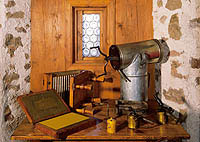 |
Bees wax manufacturing Steam-wax-melting-machines heat the wax to nearly above the melting point of 63°C in order to not destroy it. By means of the rotation of the kettle the wax flows through the sieve and is collected at the outlet. Presses for middle walls make the production of 1mm thick middle walls possible (invented 1858 by Mehring) for the mobile honeycombs. The use of the hexagonal design has two advantages: The combs are built more quickly and the bees build the smaller cells for worker bees instead the bigger cells for the drones. The form for producing candles allows the simultaneous production of 26 candles out of beeswax. |
| Beekeepers' tools Traditional tools such as smokers, feeders, a pair of tongs for combs and tools for the rearing of queen bees are also on display. |
|
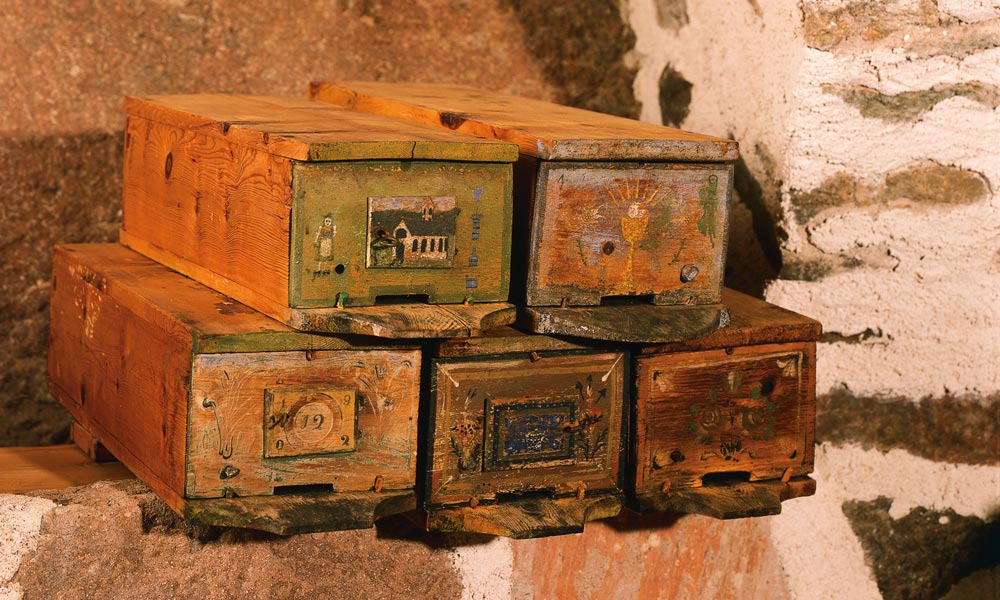 |
Traditional bee hives On the principle of "Convenient for the bee, comfortable for the apiarist" new forms of beehives have constantly been developed, at first mostly in combination with the traditional straw construction. In this way split beehives were developed, which could be opened at the back. In South-Tyrol the most famous type of beehive was the "Muchstock" with separated honey room above and brood chamber below. This type was invented by the priest P. Romedius Girtler (called Bienenmuch) from Lana. In the twenties he wrote the book "Der Bienenmuch", an early standard work for beekeepers, which is exhibited with other historical books about bees in the showcase. Many wooden beehives were decorated by means of front boards artistic ally painted with temporal and spiritual themes, whose bright colours also helped the bees to find their home beehive. Iron locks are evidence that in former times honey was often stolen, although theft of honey was punished very severely. |
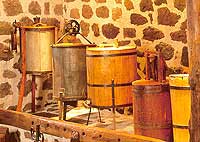 |
Traditional honey extractors With the invention of movable frame combs the beekeepers used extractors to get the honey without destroying the comb. First the beekeepers and farmers themselves made these extractors. They built them with great skill and creativity, for example by using parts of a bicycle as a kind of drive or skittle like wooden wheels for the sake of friction… |
